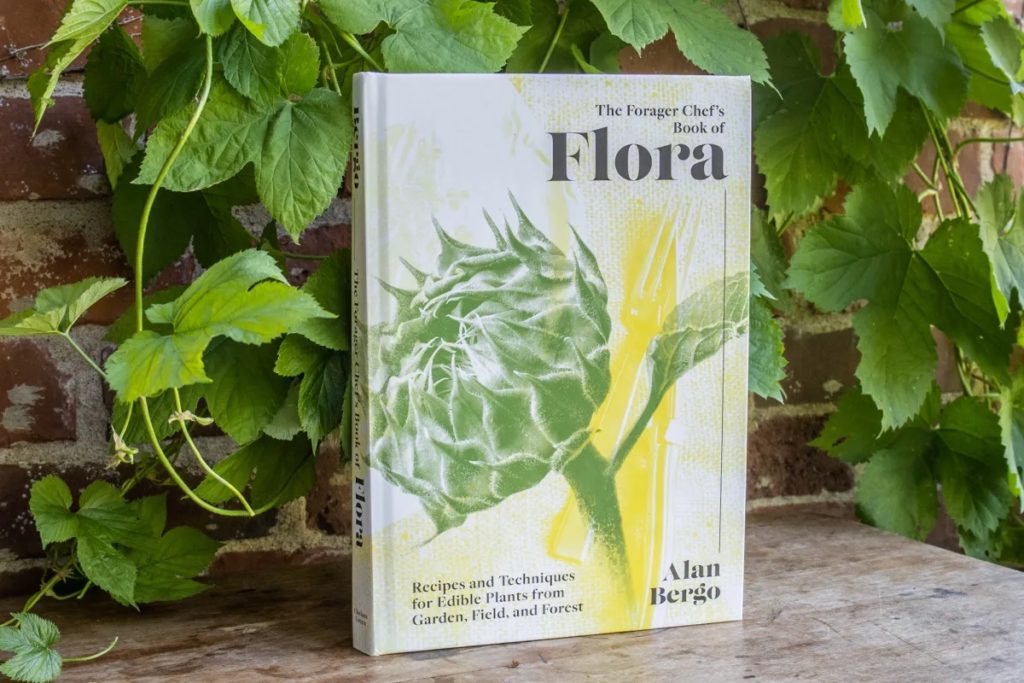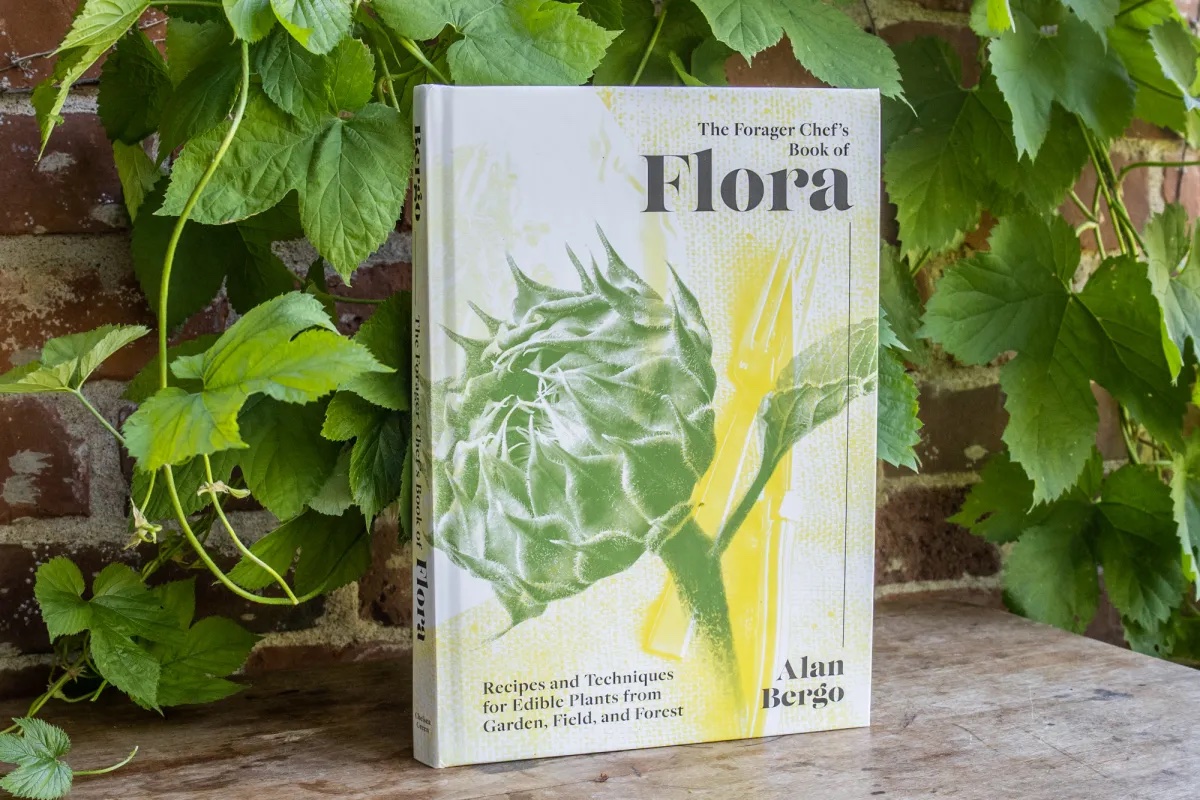
The Forager Chef’s Book Of Flora – Recipes and Techniques for Edible Plants from Garden, Field, and Forest – Alan Bergo (Chelsea Green) $44.55
What with spring just around the corner, I’ve been out hiking each and every day to see if my usual secret ramp patches have started poking out through the forest floor (they have) , or if the various rotten logs I stuffed with Chicken Of The Wood mushroom spore-impregnated dowels have come to fruition (they haven’t) , but it’s early days yet. While I wait for spring’s natural bounty to slowly reveal itself, I’ve picked up a couple a books to get me in the mood: Alan Bergo’s Forager Chef’s Book Of Flora, which I’ll write about here, and Adele Nozedar’s Foraging with Kids, which I’ll cover in a couple of weeks.
The former is less an identification guide, and more of a serious cookbook, presupposing that the reader already knows a fair bit about the actual foraging of the ingredients contained within. This is no bad thing, but I’d probably suggest reading some of Sam Thayer’s books first (Forager’s Harvest, Nature’s Garden, and Incredible Wild Edibles are an excellent triumvirate of manuals to get you started). Bergo states that he’s a Chef, not a herbalist, botanist, or mycologist, and stresses the use of an abundance of caution before embarking upon any of his recipes.
As I was perusing his recipes for Cow Parsnip and Angelica, I noticed that he mentions that one can find oneself with a nasty phototoxic burn from the juice from both of these wild plants. Now if that wasn’t scary enough, in my youth I’ve had some experience of having being horribly burned in the same manner by Giant Hogweed, a related lookalike species of aggressively invasive wild plant, now found all over. Giant Hogweed (sometimes confusing known as Giant Cow Parsnip) is like a weapons-grade version of the two previously mentioned ingredients, so yes, an abundance of caution is certainly the way to go. Best to do a whole load of study/research before you go out and seriously hurt/poison yourself, friends, and family.
These warnings aside, most foragers with even a little experience will find much to love in this book. Broken into four main chapters (Verdant: Greens / Abundant: Wild and Tame Veg /Aromatic: Herbs, Flowers, and Alliums / Nourishing: Nuts, Grains, and Starches), the book is chock-full of techniques for harvesting, preparation, and storage. The Verdant chapter alone kept me busy for a good few weeks, focusing upon bitter and sweet greens, the sorts of wild ingredients that one is just beginning to see in Ontario right now.
Ingredients range from those I consider quite standard (Dandelions, Ramps, Fiddleheads), to the more esoteric, for me anyway, (Milkweed, Hyacinth bulb, Bergamot, Purslane, Hickory nuts, Bird cherries). Once I’m feeling a little more sure of my identification of these latter ingredients I will certainly start some experimentation. Bergo is also pretty good with conventional substitutions, so there’s lots for everyone here.
The recipes are way more than simply making a chiffonade of fresh ramps to spread over buttered pasta (not that there is anything wrong with that!), and are often moderately complex, but as I made my way through Flora, I found nothing that would be beyond the average home cook.
I’m currently in the process of preparing a jar of fermented ramps AKA Tjeremsha, a Siberian Wild Onion delicacy. I’m only on day three and already there is one hell of a pong coming off them.
“One thing’s for certain: the aroma will offend timid palates, separating true believers from casual eaters who just sample a few ramps every spring.”
To be quite honest with you, I’m part intrigued/part terrified to see the end product after two weeks of fermentation. My wife has already stated flat out that she doesn’t want to go anywhere near it. Our son on the other hand…
I found this book’s many varied recipes to be truly inspiring, using nature’s bounty in so many ways I had never thought of previously; I’ll be sure to share my further experiences with this excellent book in my future How To Eat In The Wild columns.
![]()
(Five apples out of a possible five… great stuff)







